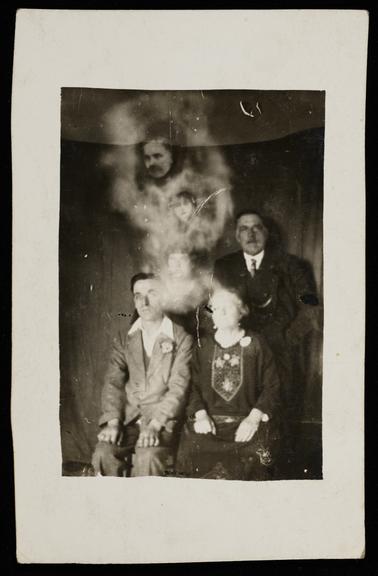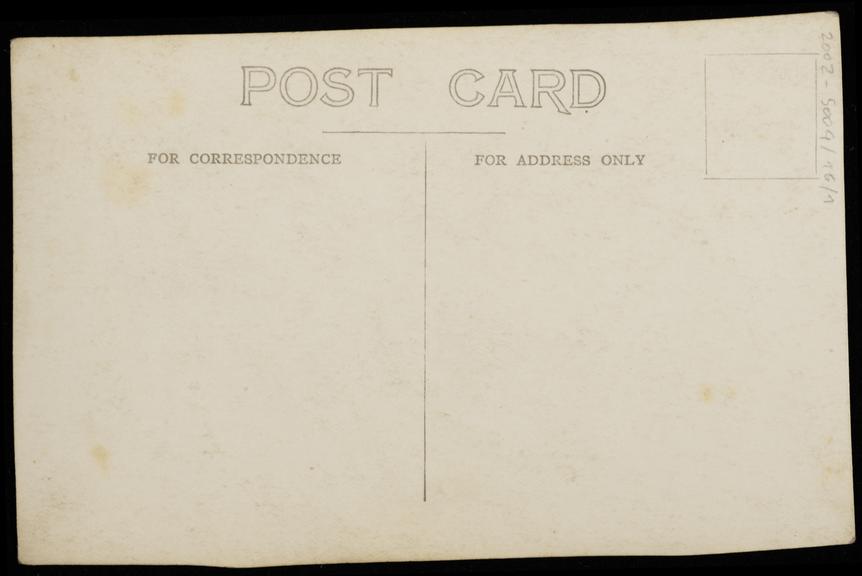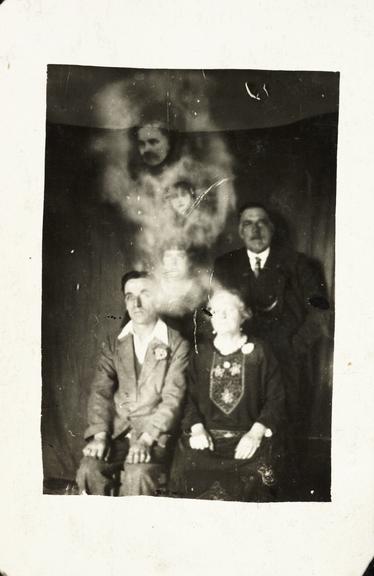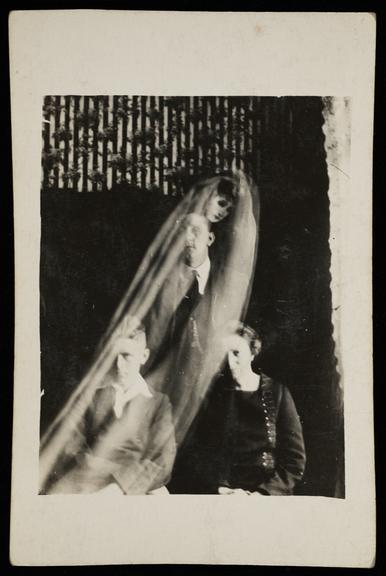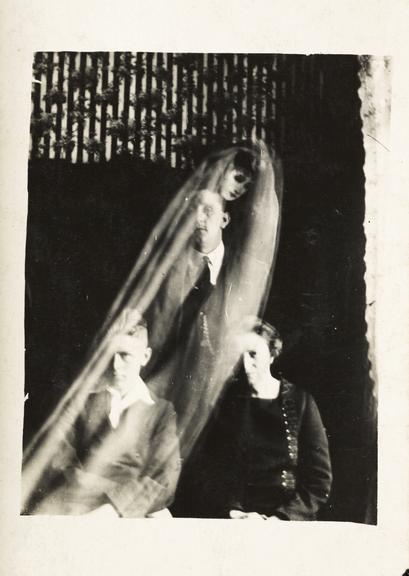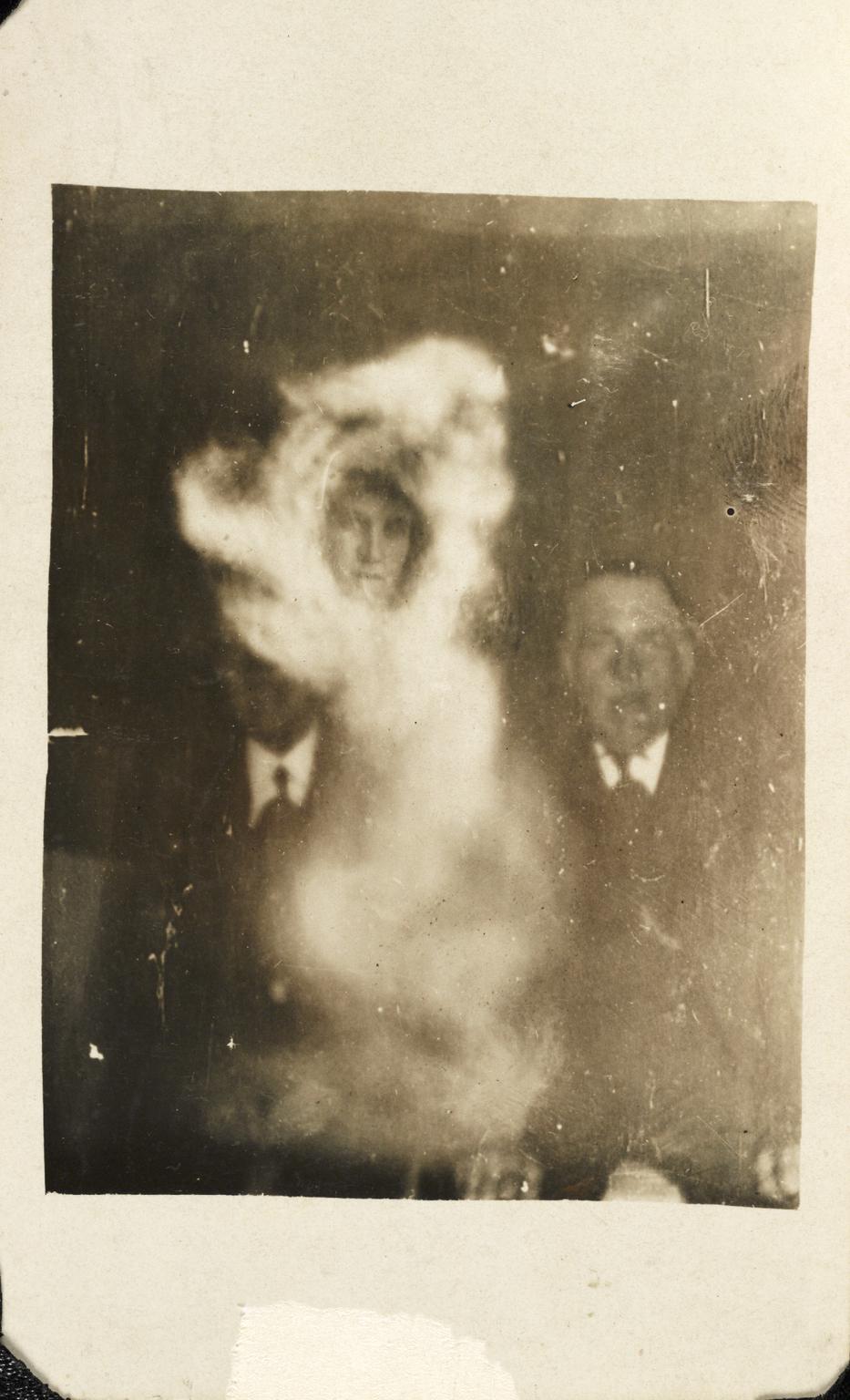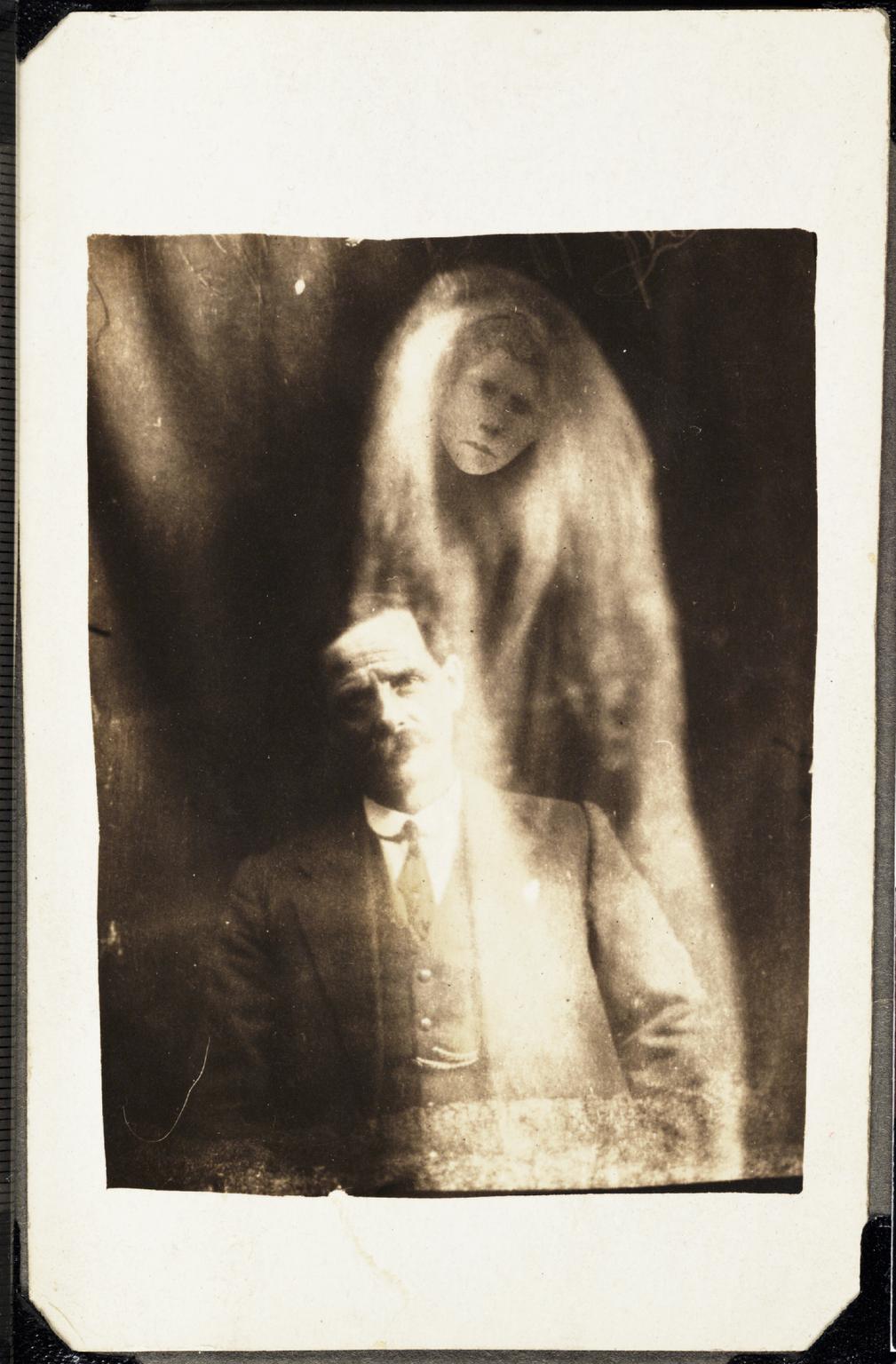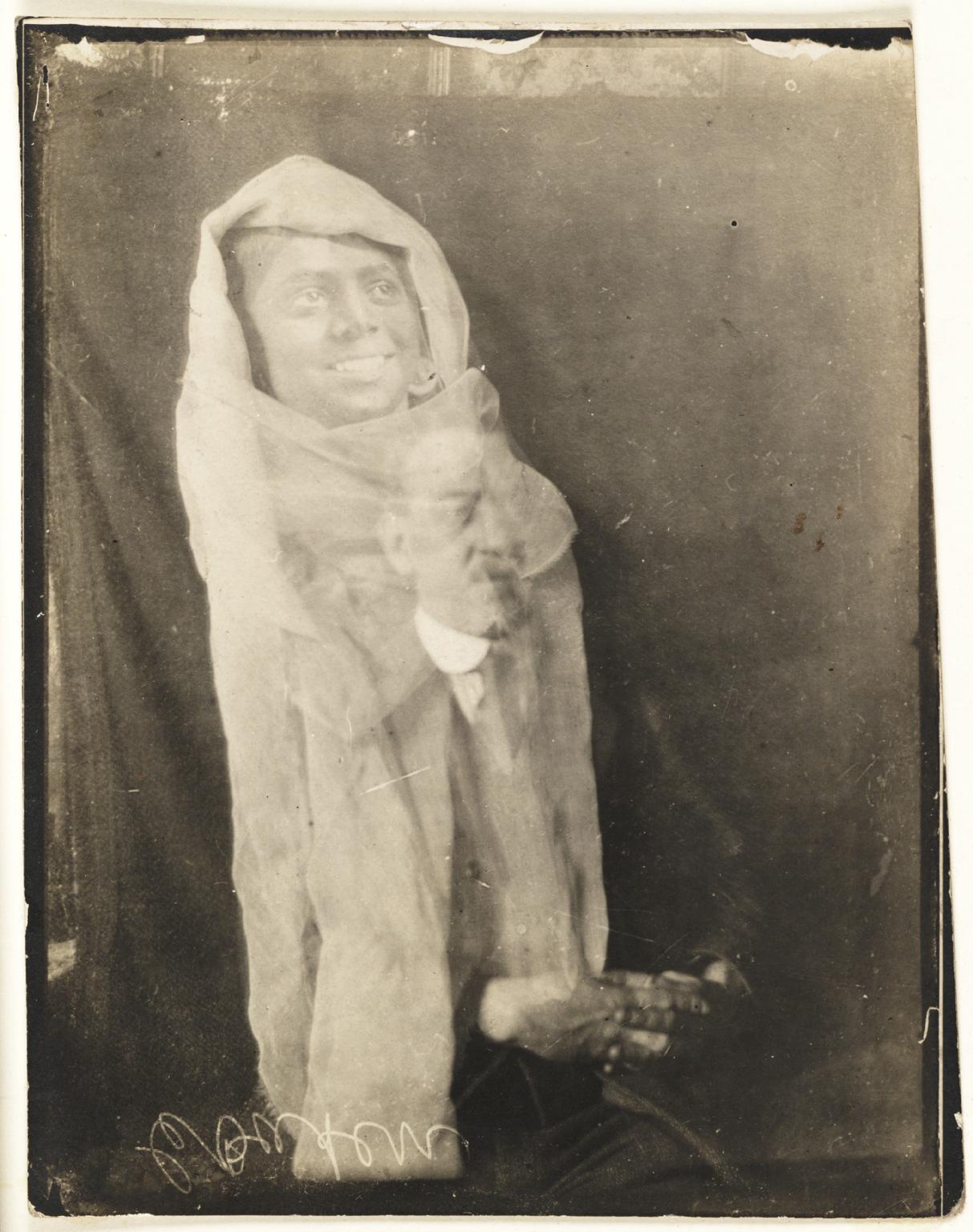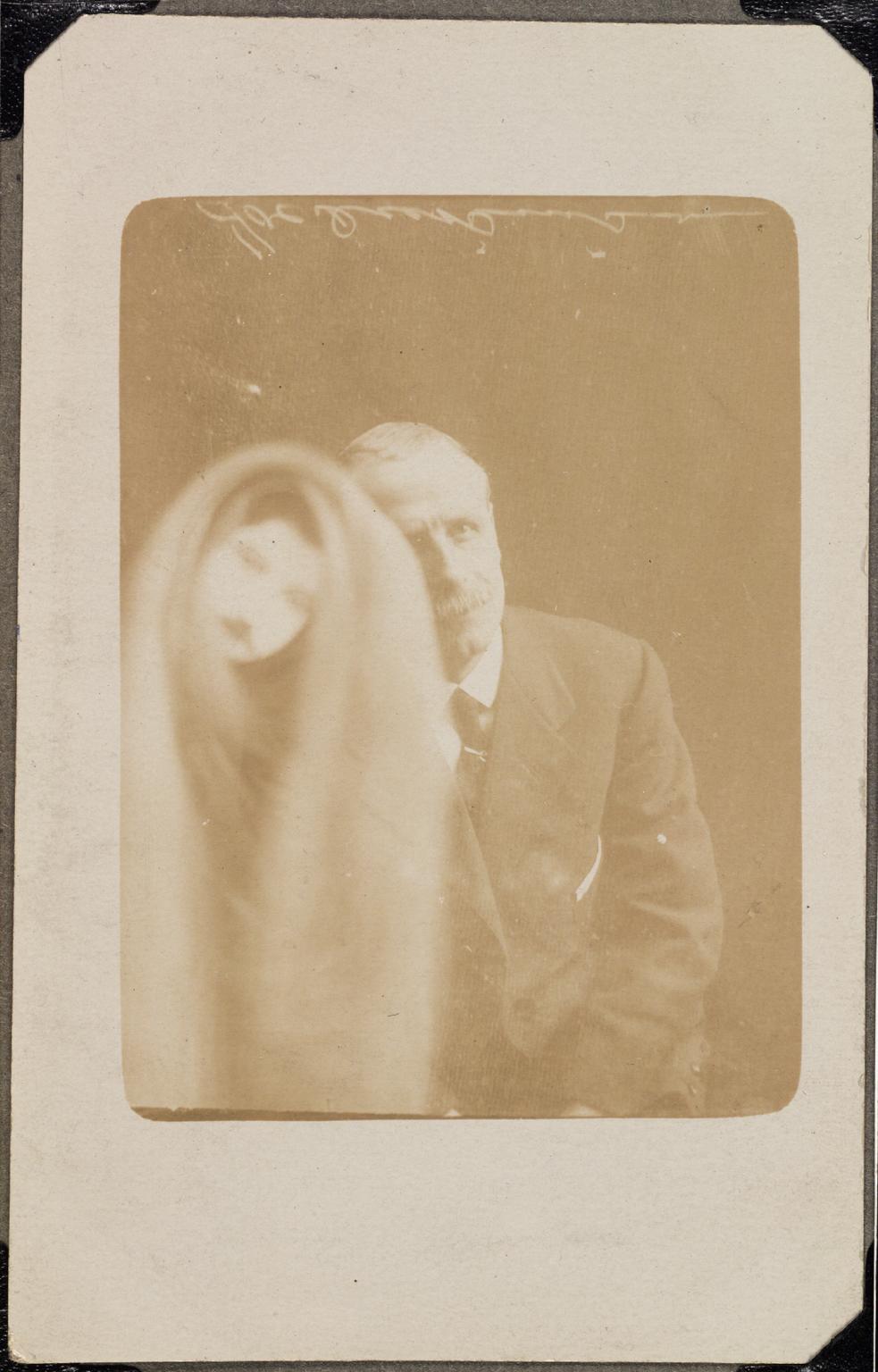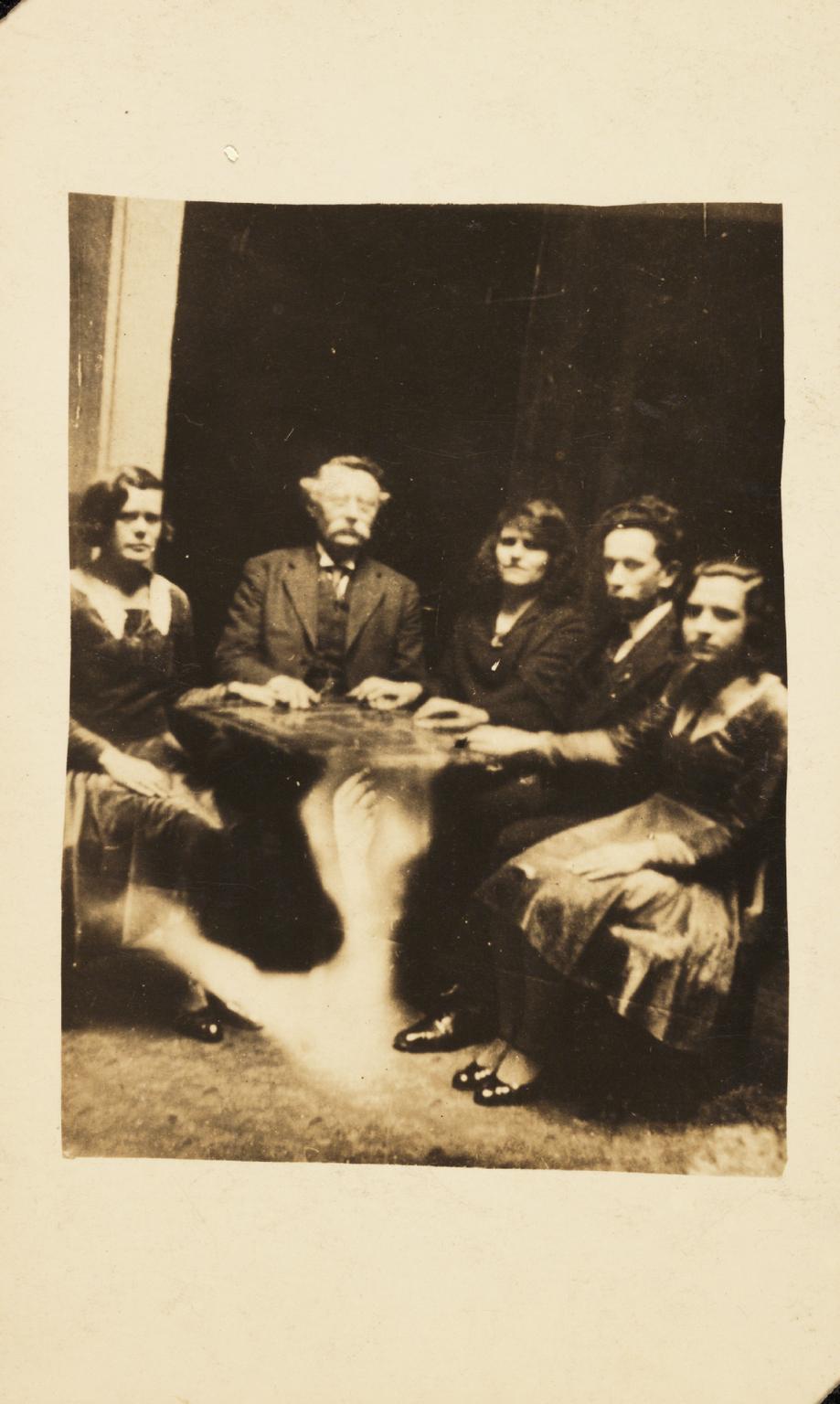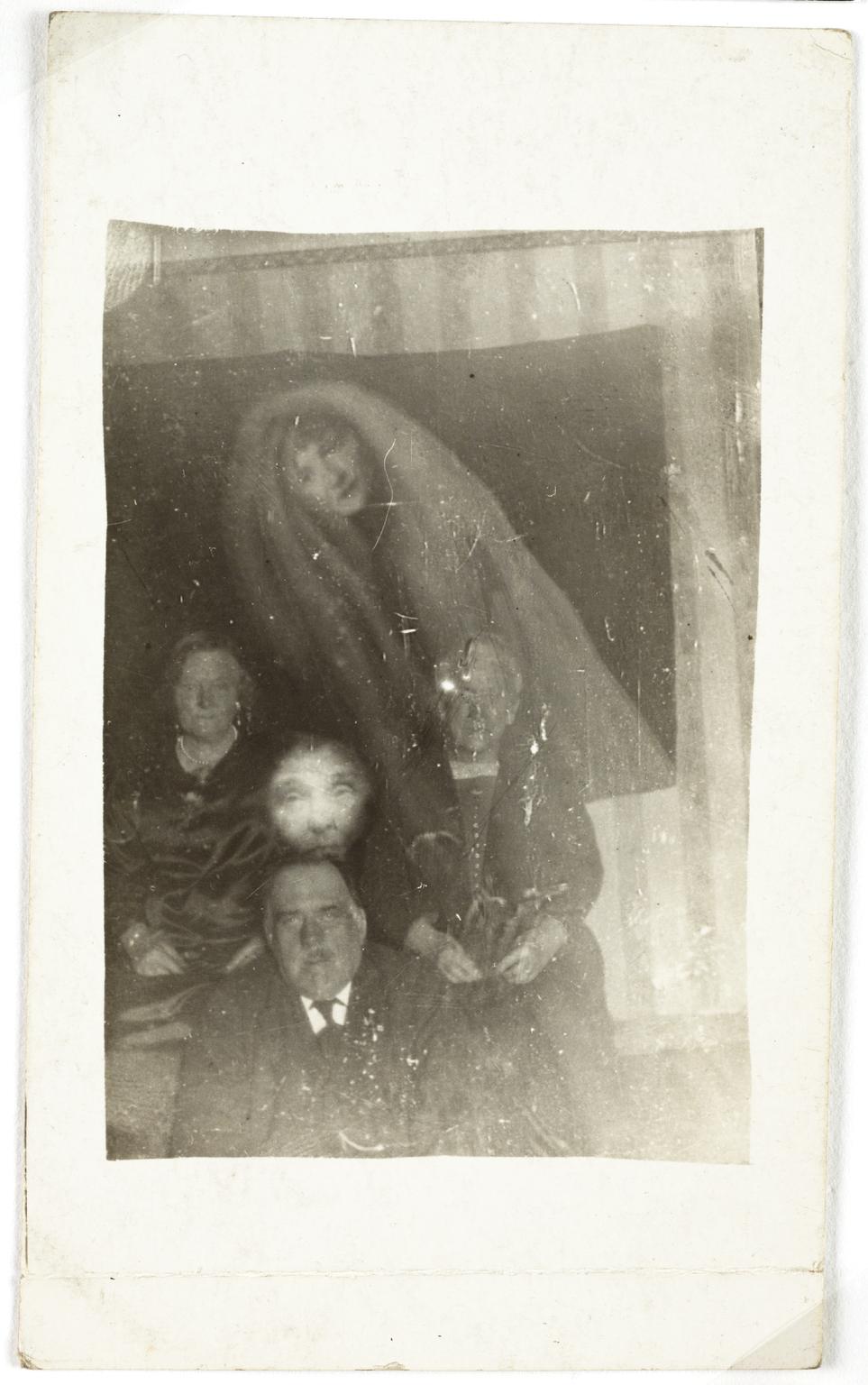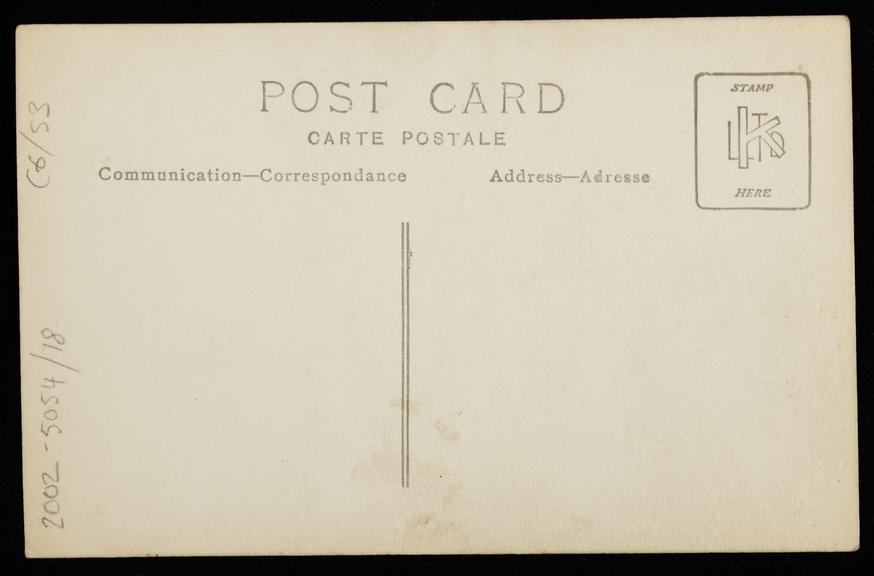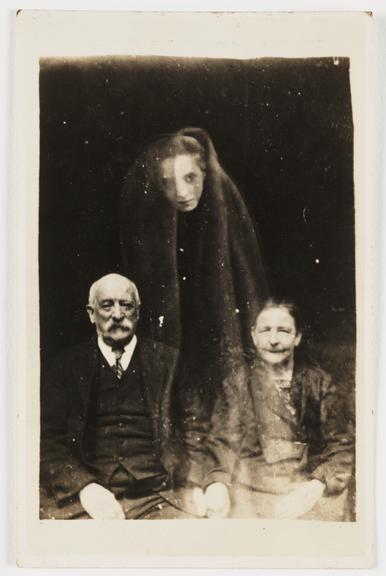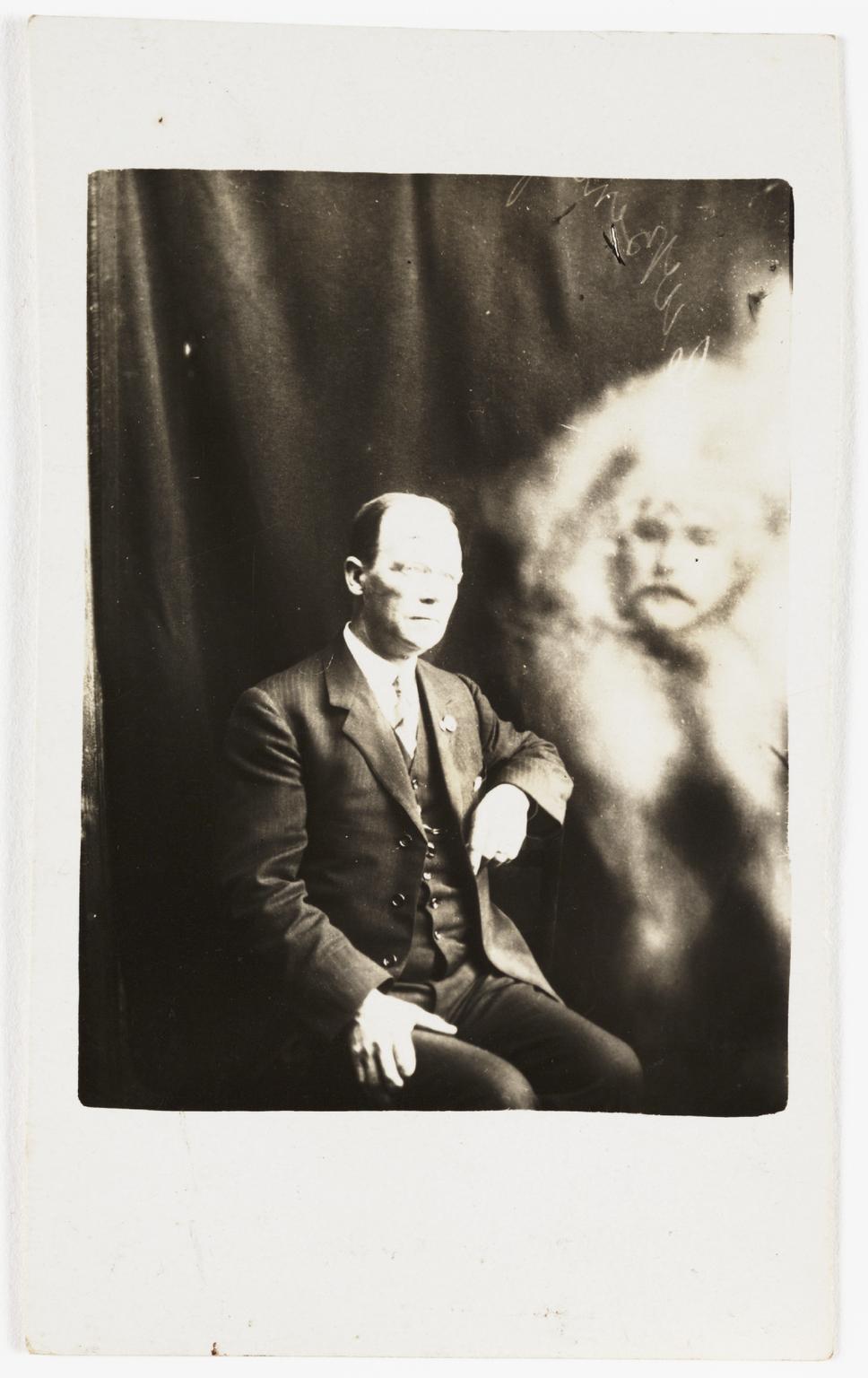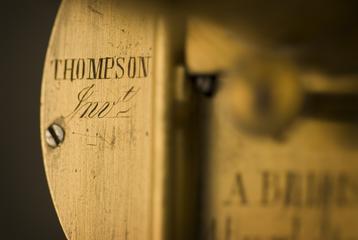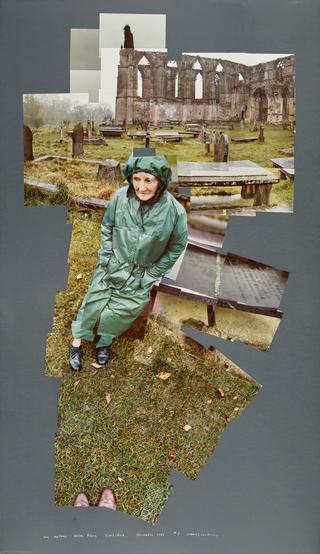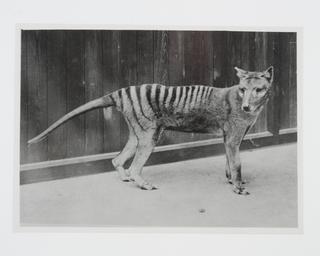
Couple with a female 'spirit'
A photograph of a couple, taken by William Hope in about 1920. A woman's face appears above the couple - identified at the time as the sister of a man prominent in the Spiritualist Church. Her cloak adds to the ethereal effect. The signature in the upper left hand corner is by one of the sitters, to authenticate the plate.
More
A photograph of a couple, taken by William Hope in about 1920.
A woman's face appears above the couple - identified at the time as the sister of a man prominent in the Spiritualist Church. Her cloak adds to the ethereal effect.
The signature in the upper left hand corner is by one of the sitters, to authenticate the plate. William Hope's spirit album photographs use double and triple exposure techniques to render the appearance of ghostly apparitions around the sitter.
Hope's work gained momentum in the aftermath of World War One, a time when many bereaved people were desperate to find evidence of loved ones living beyond the grave. Although his deception was publicly exposed by a private investigator, Harry Price (1881-1948), in 1922, Hope continued to practice.
- Materials:
- paper
- Object Number:
- 2002-5054/1
- type:
- photograph
- Image ©
- The Board of Trustees of the Science Museum
